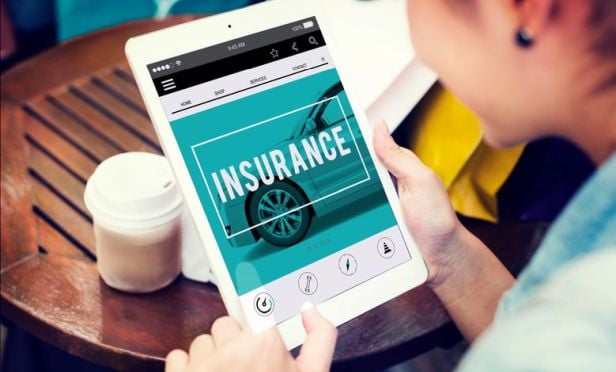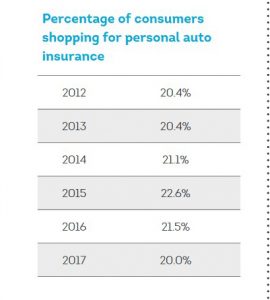
If you follow the insurance industry at all, you've no doubt read stories about the disruption of the traditional personal auto insurance market by InsurTech start-ups like Lemonade or Metromile. You've probably also seen many ads touting the ease with which consumers can buy personal auto insurance online with just a few clicks.
Based on the stories and ads, it would be reasonable to assume that an increasing number of consumers are shopping around, comparing rates and coverage. But that's not the case, according to a new report by TransUnion. Instead, the percentage of consumers shopping for personal auto insurance declined to its lowest level in four years.
The TransUnion Auto Insurance Shopping Index found that the percentage of consumers shopping for personal auto insurance declined in each of the past two years to 20.0% at the end  of 2017, the lowest level since 2013's 20.4%, as shown in the chart at right. The findings were released May 16 during the 2018 TransUnion Insurance Summit, attended by more than 150 insurance executives.
of 2017, the lowest level since 2013's 20.4%, as shown in the chart at right. The findings were released May 16 during the 2018 TransUnion Insurance Summit, attended by more than 150 insurance executives.
Recommended For You
Want to continue reading?
Become a Free PropertyCasualty360 Digital Reader
Your access to unlimited PropertyCasualty360 content isn’t changing.
Once you are an ALM digital member, you’ll receive:
- Breaking insurance news and analysis, on-site and via our newsletters and custom alerts
- Weekly Insurance Speak podcast featuring exclusive interviews with industry leaders
- Educational webcasts, white papers, and ebooks from industry thought leaders
- Critical converage of the employee benefits and financial advisory markets on our other ALM sites, BenefitsPRO and ThinkAdvisor
Already have an account? Sign In Now
© 2025 ALM Global, LLC, All Rights Reserved. Request academic re-use from www.copyright.com. All other uses, submit a request to [email protected]. For more information visit Asset & Logo Licensing.








